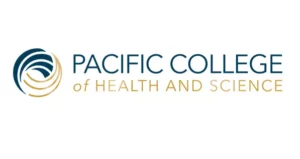Tai Chi, a centuries-old Chinese exercise system, is making its way into the Western mainstream. In ancient China, Tai Chi was a closely guarded secret passed down from family to family. In the 19th century it was revealed to the masses and quickly became the national exercise of China. Today, Tai Chi is practiced as a therapy and preventative remedy for almost every ailment. Together with qigong, Tai Chi holds a prominent place in Chinese medicine to relieve stress and clarify the mind.
Brought to the U.S. in the 1960s and introduced through universities, Tai Chi is relatively new to the Western world. With growing exposure, it has found a place among new therapeutic exercise trends in the West. Classes in Tai Chi can be found across the country through YMCAs, community centers, college campuses and gyms. From the World Gyms in Ohio to the Solinca Health and Fitness Club in southern Spain , Tai Chi seems to be everywhere. It is not uncommon to see it practiced in public parks, clubs or on television commercials, and almost everyone can recognize its graceful movements.
The source of Tai Chi’s growing popularity in the West may be due to exposure by celebrities and athletes such as Tiger Woods, who spawned a trend in the golfing world after it was reported he practiced Tai Chi as a child. The whole world took notice when Chinese martial arts, including Tai Chi, were featured in the 2004 Olympics as demonstration sports. The martial arts are expected to be an official Olympic event by 2008, furthering their popularity across the globe.
Health Benefits and Medical Recognition
Trends aside, the health benefits of Tai Chi have gained more clout and have helped the exercise’s reputation. As it has become a greater part of social consciousness that individuals have power to affect their own health, people have sought methods to help them to do just that. Medical general practitioners, orthopedic physicians and physical therapists recommend Tai Chi more regularly to their patients, and studies heralding its benefits continue to appear.
Tai Chi improves flexibility and gradually builds muscle strength while improving physical balance. It also balances the flow of qi in the mind and the body. While the concept of qi is not widely embraced by the mainstream, many Western medical practitioners recommend Tai Chi to their patients for its ability to improve pain, range of motion, flexibility and physical balance. It has been popular among the aging community for its low-impact movements and benefits such as stress and blood pressure reduction. Tai Chi consists of slow, synchronized movements that are easy to perform and can relieve arthritis pain.
If you think a career in holistic medicine is something you would like to pursue, contact us and speak to an admissions representative to get started on your new journey!
Tai Chi for Different Age Groups
Baby boomers, that often-courted sect of the consumer population, have been flooding gyms, joining them at more than twice the rate of the general population. While the fitness industry initially struggled to accommodate this influx of older clients, Tai Chi stepped in as a natural alternative to the high impact workouts such as aerobics.
Younger practitioners are embracing Tai Chi’s ability to foster a calm and tranquil mind. They also notice corrected posture, alignment and movement patterns, areas that contribute to tension or injury. Balance, fine-scale motor control and rhythm of movement are improved through the practice of Tai Chi, making it a perfect exercise for dancers and athletes.
Situated in the larger context of Taoism and the I Ching, Tai Chi has a rich history and connection with spirituality. Though past perceptions that Tai Chi is an esoteric pursuit have kept some from this practice, its meditative aspects, beauty and well-documented health benefits have found a modern, accessible context in today’s chaotic world. The Tai Chi practitioner understands that human beings are constantly changing and working through inner conflict. Change is an inevitable part of life, and it seems that today the pace is ever quickening. People who practice Tai Chi are able find balance within that change.
Featured Posts:

